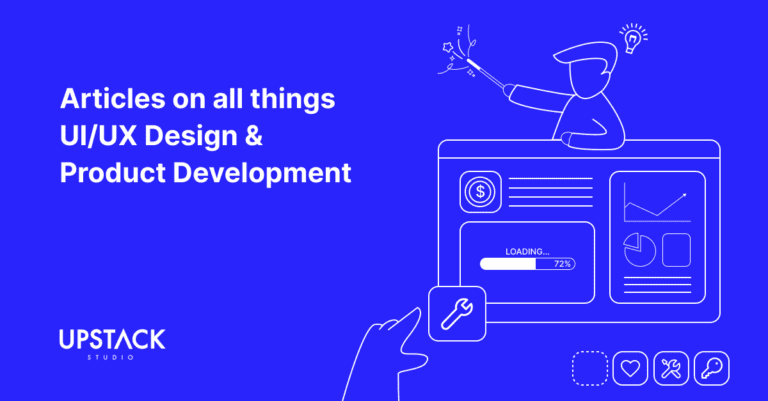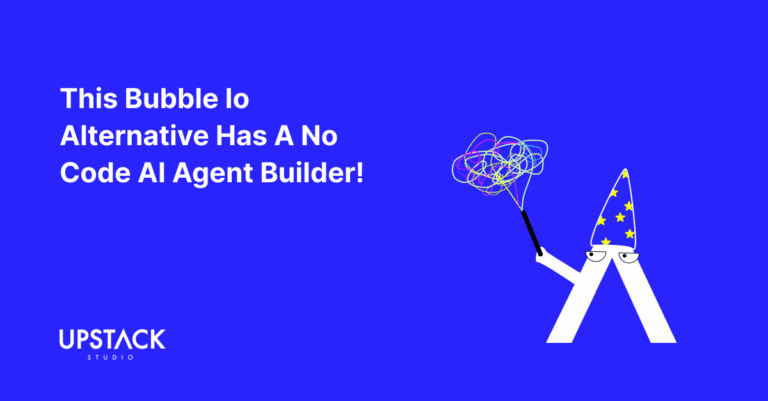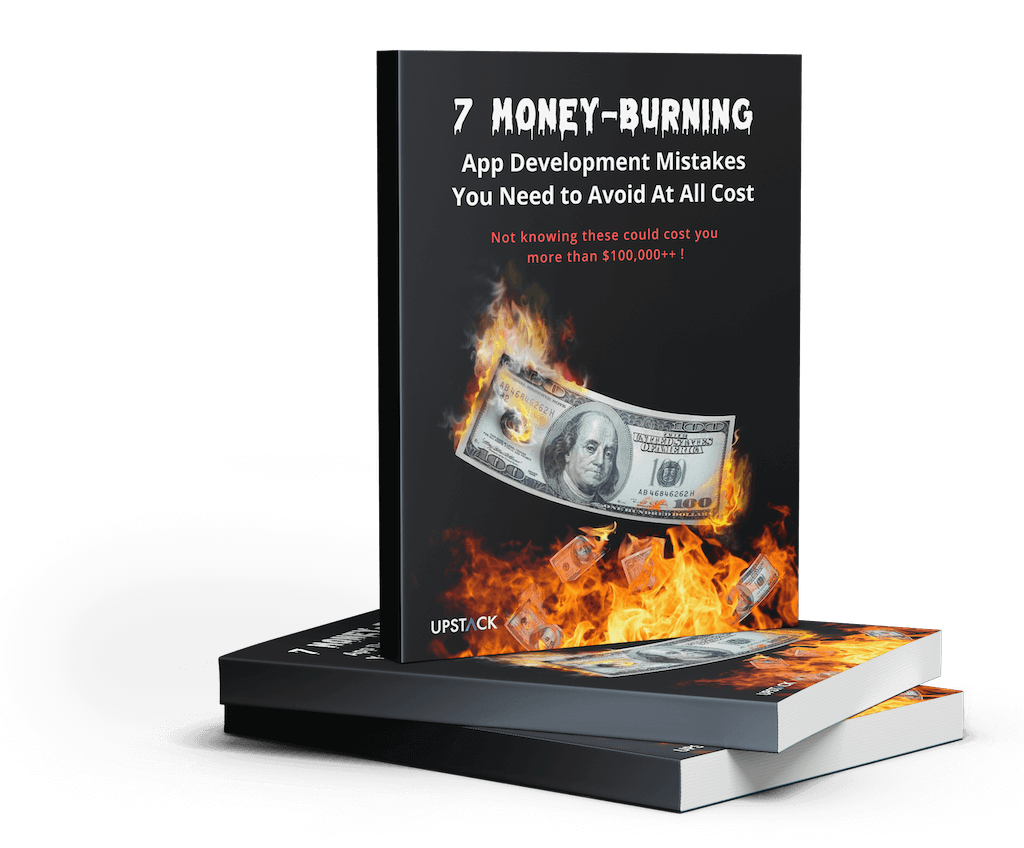Unrealistic expectations of no code SaaS
Here’s the truth for the majority of non-tech founders using no-code app builders for their MVPs.
No code is useful in helping founders fail (safely).
It’s not nearly as useful in helping them succeed.

In other words, no code SaaS is a great way to start but it’s unlikely to suffice as a final product.
Survivorship bias in no-code SaaS communities
Non-tech founders are one of the main customer segments of Upstack Studio.
And no code app builders are one of the most useful tools for non-tech founders.
Shouldn’t we advocate their use?
We do! Check out our many articles on no-code app development:
- a technology stack made from some of the best no code tools out there
- a SaaS case study featuring no code and a $50,000,000 business that sadly isn’t Upstack Studio
- our ultimate guide to building a no code SaaS for beginners
So rest assured, we have no bias against no code.
However, we see them as a tool with a specific scope of usefulness, and would never advocate no code as the be all end all of software development.
But we worry survivorship bias can give new founders false expectations of no code.
Case in point: this thread on the no-code subreddit asking an extremely common question on the potential for a successful business using a no-code SaaS.

And let’s be real – ‘successful’ here means money.
Look at the top comment:

If we take this answer at face value, no code can’t make you 100 million.
But ten million?
Five million?
Just one measly million dollars?
Sure, why not?
It worked for the poster, so it should work for you, your mailman, and your piano teacher.
Keep scrolling, however, and you get multiple replies with a more conservative take.
We’ve compiled several below.

But of course, the one success story gets pushed to the top.
And that’s the one most likely to be seen by new founders who then go away thinking:
“1 million dollars is pretty good!”
Look, it’s great to be inspired – but remember these are exceptions to the rule.
It happens in every industry: one success story gets the spotlight while multiple failures stay hidden.
That’s survivorship bias.
That said, there are seven-figure businesses running on Bubble.
Think Flexiple and BetterLegal which have both made headlines for that very reason.
However, look closer and you’ll find Flexiple is a two-sided marketplace connecting buyers and sellers.
Betterlegal digitizes the process of company incorporation and compliance for entrepreneurs.
Neither is using no code to build traditional software as a service where people are paying for software and nothing else.
They just built a super scalable delivery vehicle for the business.
Nothing fancy, so no code isn’t going to be a limiting factor.
But for traditional SaaS, no code probably will be a limiting factor once you can and want to expand.
Now, your business will be limited by what a no-code app builder can and can’t do.
Limitations of no code SaaS
Once you need to add niche functions that truly give your product a competitive advantage, you’ll begin to feel the inherent limitations of no code app builders and no-code SaaS.
Hard (or Impractical) to build custom functions
No code is meant to be easy to build because the app builder gives you a list of ready-made functions – common use cases – and you work with those and only those.
But if your idea is good, your list of features is bound to grow.
And it may very well grow beyond the list of functions provided in any no code app builders.
There are workarounds but they’re not ideal as they almost always mean the code is not as clean and efficient as it could be if it were written just for your app.
Heavy reliance on third-party services
With no code, whenever a certain function is impossible or impractical to build within the ecosystem, the solution is to use a third-party plugin.
This isn’t ideal for two reasons.
First, these services cost more per use, so once you scale to hundreds of users, you’ll feel the cost.
Second, too many plugins slow down the load time of a SaaS.
You’re adding layers to the backend code that don’t have to be there.
Keep doing this and you have a Frankenstein app that’s clunky and hard to maintain.

The only one that wins here is the plugin founder.
Hard to scale cost-effectively
For the reasons above, if we compared the average no-code app to an identical product custom-coded by competent developers, we’ll find that:
- Custom and complex features get added significantly faster with custom code.
- Faster performance and lower maintenance costs for the custom app.
What does this mean for the two founders?
The one with a custom product iterates faster over time and can offer their SaaS at lower prices.
Meanwhile, the other founder will be this guy:

No code app builders take time to learn
And even more time to master.
It’s not like Canva where you can just stumble in and make a decent poster in a few minutes.
You’ll hear stories of businesses that launched their MVP in weeks with no code.
Those founders were most likely already experienced with the app builder or hired professional no-code developers, which has become a field unto itself.
This brings us to probably the most important limitation of a no code app builder.
No code app builders won’t give you advice
Quite often, founders are eager to do more than necessary.
With no code being so fast and cheap, there’s more temptation to throw everything at users, which translates into:
- wasted time
- a SaaS clogged with unnecessary details
- avoidable bugs and glitches
Combined, it can lead to good ideas spoiled by poor execution.
When you work with a competent developer who has built these types of apps, you access first-hand knowledge on:
- how the project turned out
- unforeseen challenges those founders faced
- what features ended up being a waste of time and money
- what features SHOULD have been implemented
- if the founder has made a mistake in market validation, and
- even assist the founder with finding testers
Having a trustworthy human being on your side who can handle the technical requirements helps keep the project on course.
Examples of no-code SaaS startups that moved to custom code
We should clarify that we used Wappalyzer, a tool that lists the tech stack of a web app or site.
Based on that, here are some successful businesses that started out on no code but currently run on a custom stack.
- Dividend Finance – They built their MVP on Bubble, but once they needed to implement more complex features, they went custom and hired in-house developers.
- Comet – one of the OGs of the Bubble no code startups, is also a two-sided marketplace and they no longer run on no code.
- BloomTech – MVP on Bubble, today no longer running on no code.
Hopefully, these show that moving to high code is a normal part of a successful SaaS startup.
Now let’s conclude by addressing our title.
Why no code SaaS won’t make you rich
Welcome to the free market, where a profitable solution will attract potential competitors.
If they think they can build something better, they become actual competitors.
Your no-code SaaS might be fine when it’s the only player, but what happens when it goes up against a competitor that can be fully customized?

That’s why no successful software company ever stops iterating.
The goal is to solve your customers’ problems today better than yesterday.
Competitors are always trying to solve those problems better than you!
And if that requires new features in your SaaS, no code will limit how fast and far you can go.
A custom solution will be better at evolving with customers’ needs in the long run.
How are you going to ‘get rich’ when your no-code minnow is trying to fight a shark?
You don’t – you get eaten.
Yes, in the case of Better Legal, they are a large business running on Bubble.
But if you read their story, they first transitioned out of no code, realized it was more economical, and joined the Bubble ecosystem.
They went the conventional route first, then found out they were an exception.
Don’t go the unconventional route first, then find out you’re no exception.
And what is the conventional route?
No code for fast market validation, custom coding to grow the SaaS into a market leader.
🔑 Key Takeaways
- No code SaaS is a great way to build early-stage prototypes quickly and cost effectively.
- However, a no code SaaS alone will eventually become victim to the inherent limitations of no code SaaS builders.
- The limitations include limited to no custom iteration and heavy reliance on third party service providers.
- These make a no code SaaS uncompetitive compared to alternatives with custom coding.
- We’re not taking a dump on no code here – we just want you to have a realistic understanding of how to fully utilize no code SaaS.
- No code for the win during MVP stage – custom coding to create a true market leader.
Hey there stranger, thanks for reading all the way to the end. Consider joining our mailing list for a one-stop resource on everything from micro SaaS validation all the way to execution and promotion. Get a nifty list of questions to ask app developers when you sign up!
App Developer Interview Questions Template
Download this template now so you know exactly what to ask App Development Agencies! Let us know where should we send it through the form below.




